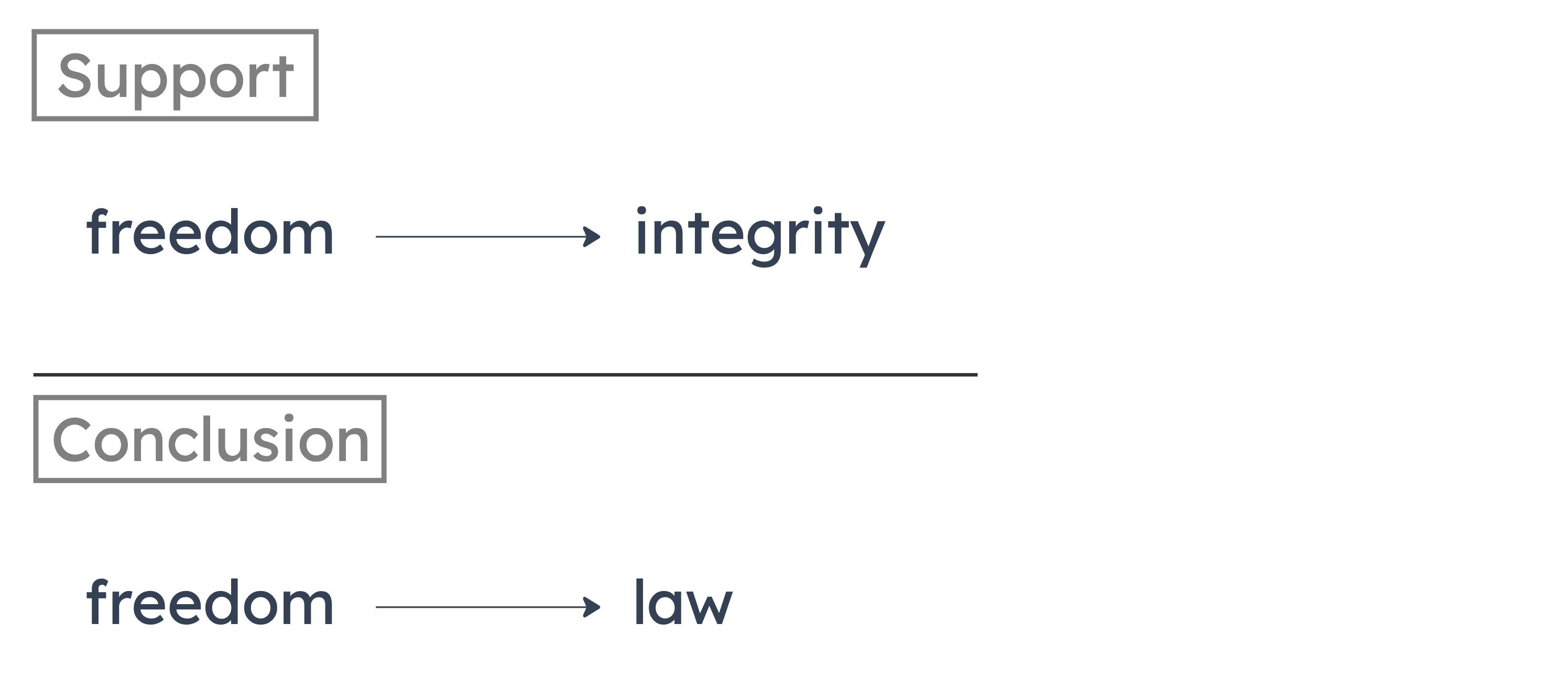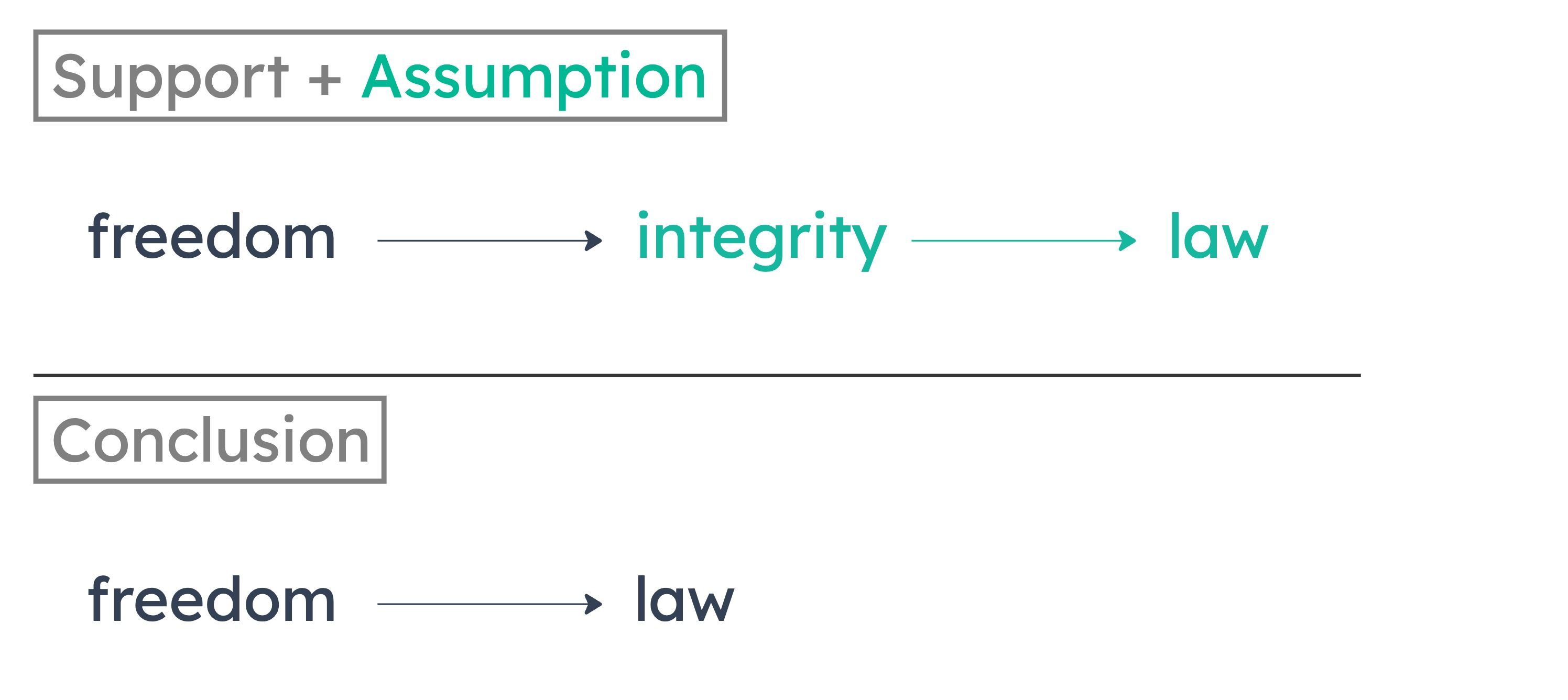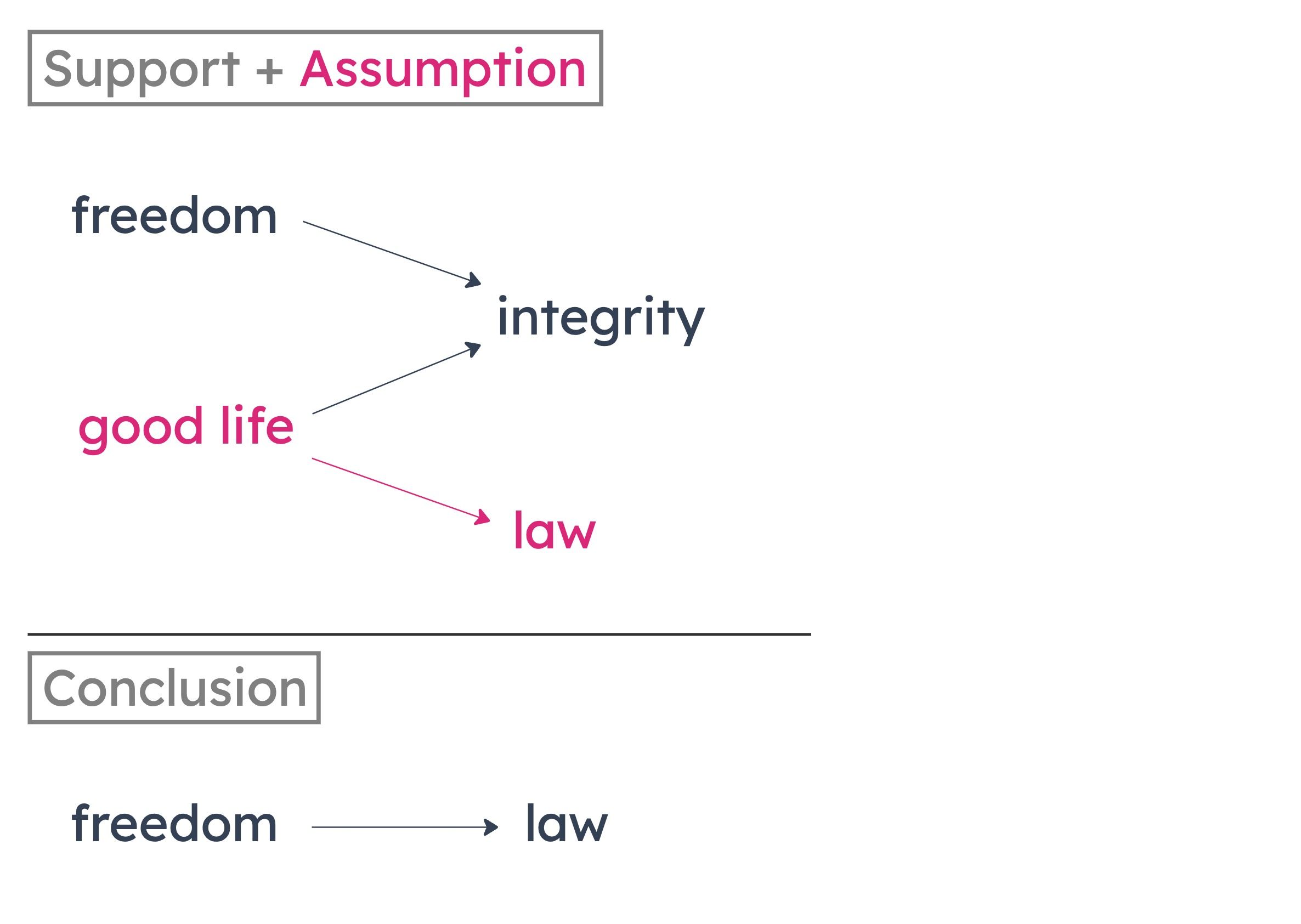The author then makes an extra conditional claim: social integrity is also necessary for pursuing the good life. But note that pursuing the good life has no relationship to either individual freedom or the rule of law. So this claim doesn’t offer any “pathway” to the conclusion that the rule of law is necessary for individual freedom. Since there’s no way for this claim to support the conclusion, it’s not actually a premise and we can ignore it.

A
There can be no rule of law without social integrity.
B
There can be no social integrity without the rule of law.

C
One cannot pursue the good life without the rule of law.

D
Social integrity is possible only if individual freedom prevails.
E
There can be no rule of law without individual freedom.
The first statement of the passage tells us, translated:
NOT educated population --> economically and politically weak
Taking the contrapositive, we get:
NOT economically and politically weak --> educated population
The next statement tells us, translated:
educated population --> commit to public education
Connect the two statements up and we get:
NOT economically and politically weak --> educated population --> commit to public education
From this, we are able to validly draw the conclusion that:
NOT economically and politically weak --> commit to public education
But, of course, the invalid conclusion actually drawn is:
commit to public education --> NOT economically and politically weak
The general form of this invalid argument is as follows:
A --> B --> C
__________
C --> A
Answer choice (B) exhibits the same form.
The first statement tells us that, translated:
incapable of empathy --> not good candidates
Contraposed, it says:
good candidates --> capable of empathy
The second statement tells us that, translated:
capable of empathy --> manipulate
Connect the two statements up and we get:
good candidates --> capable of empathy --> manipulate
From this, we are able to validly draw the conclusion that:
good candidates --> manipulate
But, of course, the invalid conclusion actually drawn is:
manipulate --> good candidates
As you can see, this argument, like the one in the passage, also takes the invalid form of:
A --> B --> C
__________
C --> A